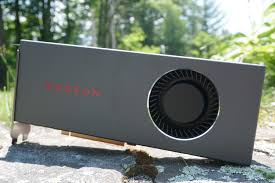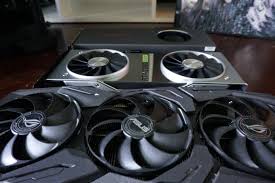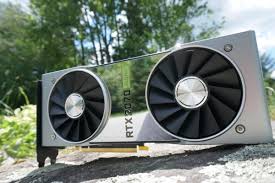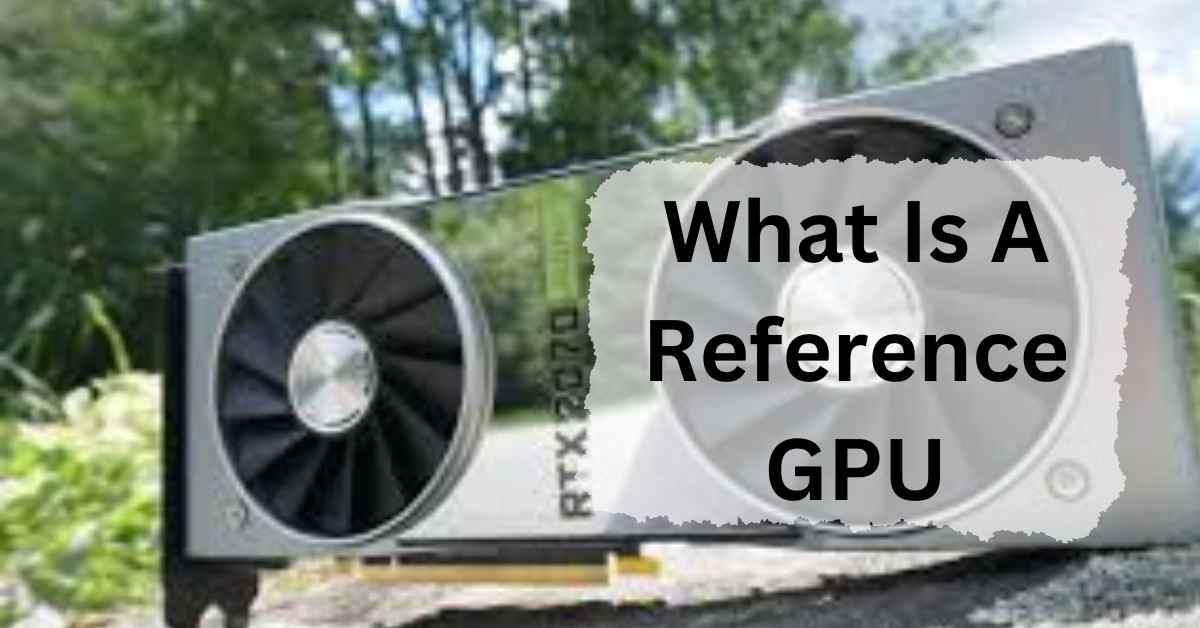A Reference GPU is a crucial concept in the world of graphics processing units (GPUs). It serves as the baseline or standard model from which other GPUs are derived. Whether you’re a tech enthusiast, a gamer, or a developer, understanding what a Reference GPU is can help you make informed decisions when it comes to hardware upgrades or software development.
A reference GPU is the original design made by a GPU manufacturer, like NVIDIA or AMD. It sets the standard for performance and features. Other companies may use this design to create their own versions, sometimes with better cooling or higher speeds.
In this article, we will discuss “What Is A Reference GPU”.
Table of Contents
Understanding Reference GPUs:
So, what exactly is a Reference GPU? A Reference GPU is a model designed and released by the GPU manufacturer as the standard version of their graphics card. Think of it as the baseline model from which all other versions are derived.

1. Design and Features:
Reference GPUs have a standard design and features set by the manufacturer. This usually includes a specific cooling solution, a certain number of ports, and a defined aesthetic. They set the benchmark for other custom models.
2. Performance:
When it comes to performance, Reference GPUs are the baseline. They are often used for benchmarking because they represent the manufacturer’s intended performance.
Comparing Reference GPUs with Custom GPUs can give you an idea of the potential improvements custom designs can offer.
3. Manufacturers of Reference GPUs:
Major companies like NVIDIA and AMD produce Reference GPUs. Popular models include NVIDIA’s Founders Edition and AMD’s Radeon reference cards. These are often the first versions released when a new GPU architecture is launched.
Read: Do GPU Brands Matter – A Comprehensive Guide Of 2024!
Advantages of Reference GPUs:
There are several advantages to using Reference GPUs. They often have better compatibility with the latest drivers and software updates. They also provide a reliable performance baseline, which is crucial for developers and professionals.
Read: How Good Is 30c GPU Temp On Idle – Ultimate Guide – 2024
Disadvantages of Reference GPUs:
However, Reference GPUs aren’t without their drawbacks. They can have limited cooling capabilities and might not perform as well as Custom GPUs under heavy load. In some cases, Custom GPUs might offer better value for money.
Future of Reference GPUs:
The future of Reference GPUs looks promising, with continuous advancements in GPU technology.
Companies are always working on improving performance, efficiency, and cooling solutions. The next generation of Reference GPUs will likely push the boundaries even further.
Read: What Is Normal GPU Usage While Gaming – Guide Of 2024!
The Role of Reference GPUs in the Industry:
Reference GPUs set the standard for graphics cards. They help companies design, test, and improve their own versions. These GPUs ensure high performance, reliability, and compatibility across different computer systems.
What is a reference gpu used for?
A reference GPU is used to set a standard for graphics cards. It helps other companies create and test their own versions, ensuring high performance, reliability, and compatibility with different computer systems.
Read: Is 70c Safe For GPU – A Ultimate Guide Of 2024!
Are AMD reference cards good?
Yes, AMD reference cards are good. They offer strong performance, solid build quality, and reliable cooling. These cards are a great choice for gamers and professionals who need a dependable graphics card.
Are reference cards better?
No, reference cards are not always better. They set a standard, but custom cards from other companies often have better cooling, higher speeds, and more features. Choose based on your needs and budget.
Read: Is Minecraft CPU Or GPU Intensive – Complete Guide – 2024!
What is a reference card?

A reference card is the original design of a graphics card made by the manufacturer. It sets a standard for performance and quality, which other companies use to create their own versions.
Read: Is Rust CPU Or GPU Heavy – A Complete Guide Of 2024!
Is it better to buy a reference GPU?
No, it’s not always better to buy a reference GPU. While they are standard, custom GPUs often offer better cooling, performance, and features. Choose based on your specific needs and preferences.
Read: How Long Does GPU Last – A Comprehensive Guide Of 2024!
What are Reference Cards and Non-Reference Cards?
Reference cards are the original designs of GPUs set by the maker. Non-reference cards are custom designs from other companies, often with better cooling and extra features. Both serve similar functions but differ in design and performance.
Which should you buy, reference or custom graphics cards?
It depends on your needs. Custom graphics cards often offer better cooling and features. Reference cards are standard and reliable. Choose based on your budget and the specific features you want for your system.
What is an alternative graphics card?
An alternative graphics card is a different option from the main brands or models. It might offer similar performance but with different features or at a lower price. These cards provide more choices for users.
What is the difference between a DDR2 graphics card and a DDR3 graphics card?
The main difference is speed. DDR3 graphics cards are faster than DDR2 cards. DDR3 has higher bandwidth and better performance, which means it can handle more data at once, improving overall graphics quality and efficiency.
Is a GDDR5 graphic card really different from a GDDR3 graphic card with same memory?
Yes, a GDDR5 graphics card is better than a GDDR3 card with the same memory size. GDDR5 has faster speeds and better performance, making it more suitable for gaming and demanding applications.
What is the main difference between reference vs non-reference card?
The main difference between reference and non-reference cards is cooling and design. Reference cards use the original manufacturer’s design, while non-reference cards have custom cooling and designs for better performance and appearance.
How do I know if my graphics card is reference design?
Check the manufacturer’s website for your card’s model. Reference designs usually have a simpler look with a single fan. Compare your card to official images or ask the retailer for details.
What is the GPU in iPhone?
The GPU in iPhones is part of Apple’s A-series chips. For example, the iPhone 13 uses the A15 Bionic chip, which includes a custom Apple GPU designed for high performance and efficiency.
What are aftermarket GPUs?
Aftermarket GPUs are graphics cards made by companies other than the original chip manufacturer. They often feature custom cooling solutions, improved performance, and different designs compared to the reference models.
Reference vs. custom graphics cards: Which should you buy?

Buy a reference card for a standard, reliable option. Choose a custom card if you want better cooling, higher performance, and a unique design. Your choice depends on budget, needs, and preferences.
FAQs:
1. What is the main difference between a Reference GPU and a Custom GPU?
Reference GPUs are the standard models released by GPU manufacturers, while Custom GPUs are modified versions designed by third-party companies, often with better cooling and performance features.
2. Can Reference GPUs be used for mining cryptocurrencies?
Yes, Reference GPUs can be used for mining, but they might not be as efficient as Custom GPUs designed specifically for mining purposes.
3. Are Reference GPUs good for VR gaming?
Reference GPUs can handle VR gaming, but for the best experience, a Custom GPU with enhanced performance and cooling might be preferable.
4. How often are new Reference GPU models released?
New Reference GPU models are typically released with each new GPU architecture, which can be every year or every few years, depending on the manufacturer.
5. What should I consider when choosing between a Reference and Custom GPU?
When choosing between a Reference and Custom GPU, consider factors like cooling solutions, overclocking potential, price, and the specific needs of your applications.
Conclusion:
In conclusion, a Reference GPU is the standard model created by GPU manufacturers like NVIDIA and AMD. It sets the performance and design benchmarks for other custom GPUs. While Reference GPUs are reliable and compatible, custom GPUs often offer better cooling and enhanced performance, making them a preferred choice for many users.

I’m Noah Lucas, the voice behind the content you find here. With 5 years of experience in the GPU field, my goal is to provide clear and helpful information to everyone interested in this technology.
Whether you’re new to GPUs or looking to deepen your understanding, my articles aim to break down complex topics into simple, easy-to-understand language. This way, no matter where you’re from, you can find the information you need without any confusion.

